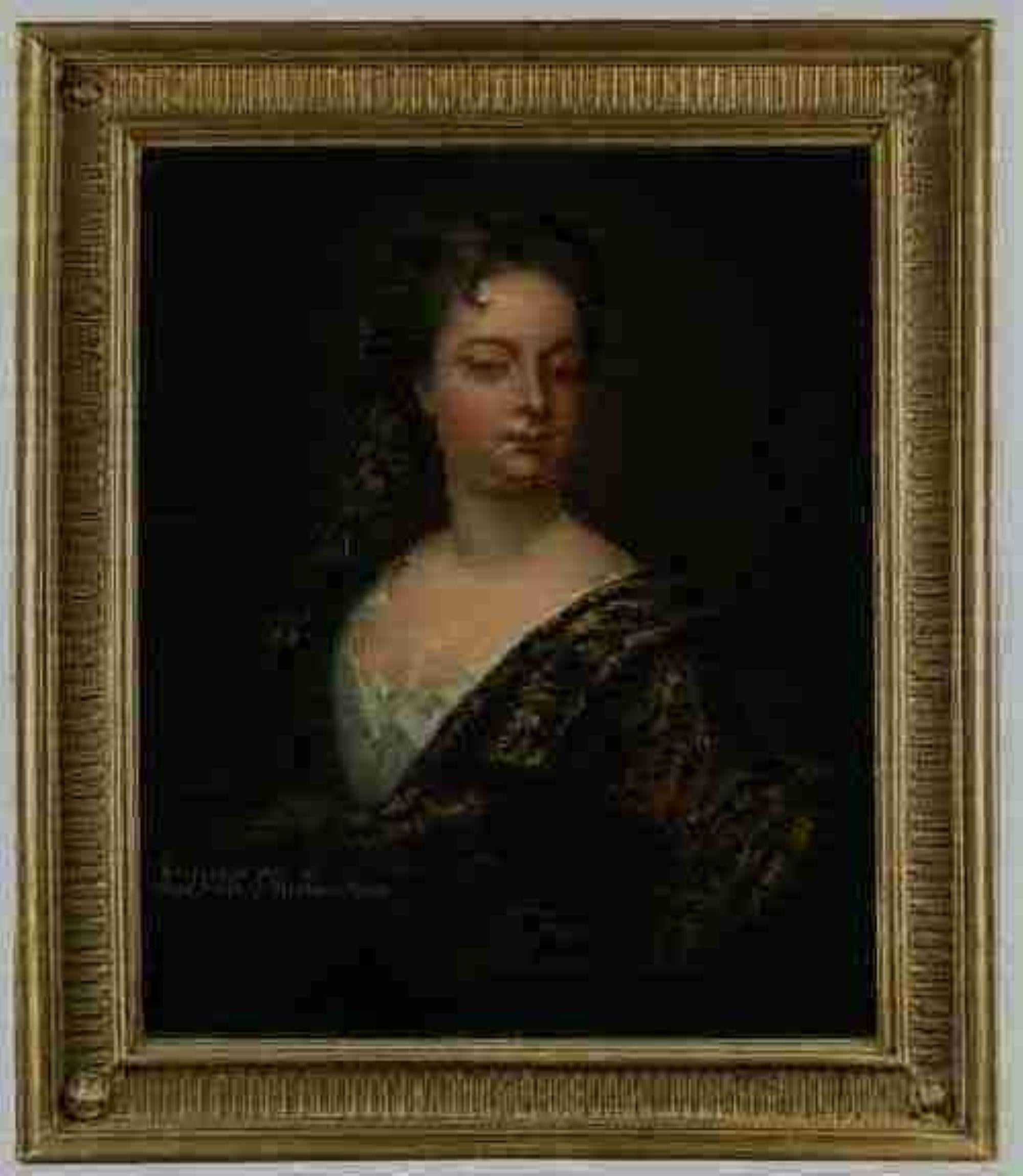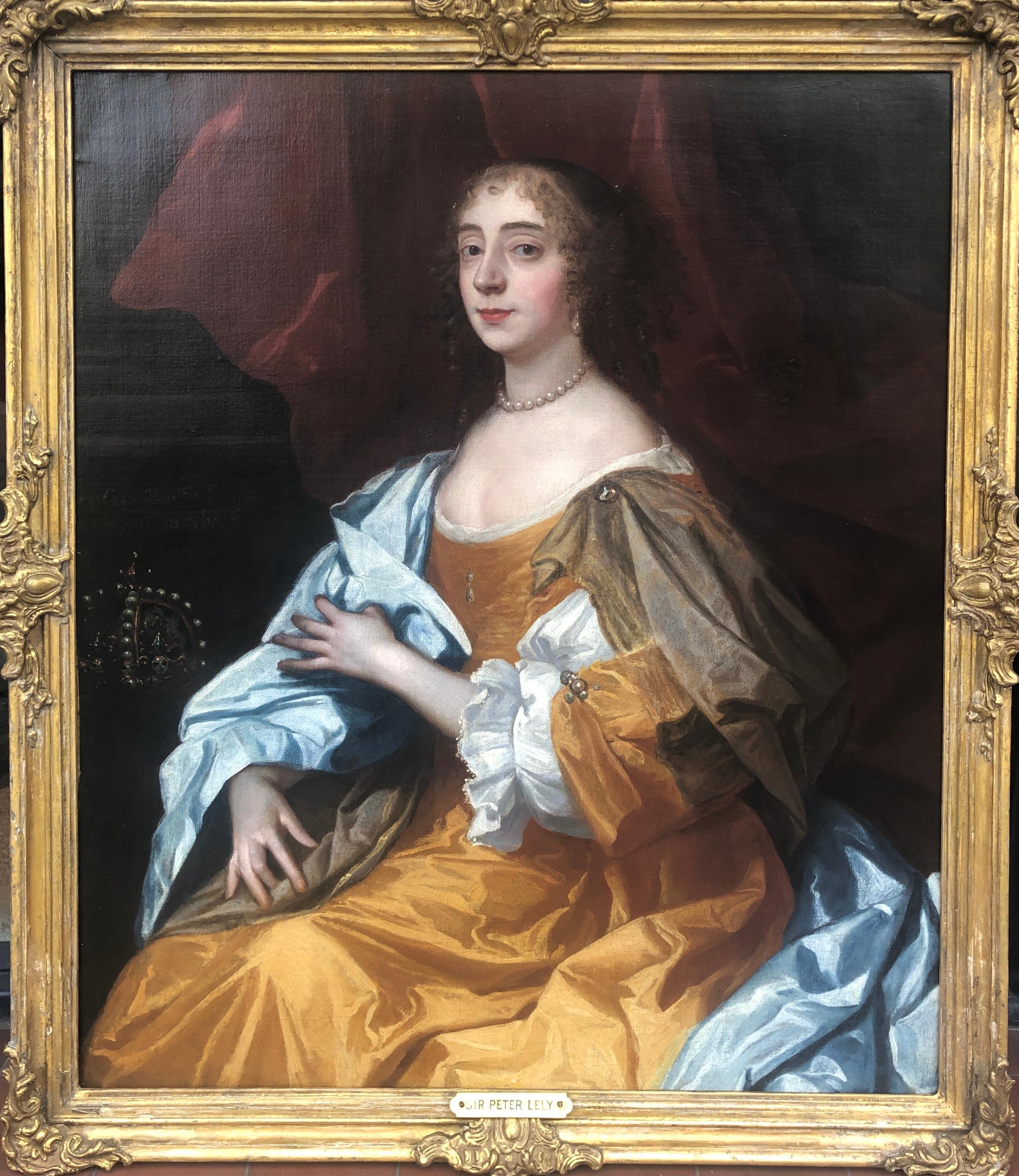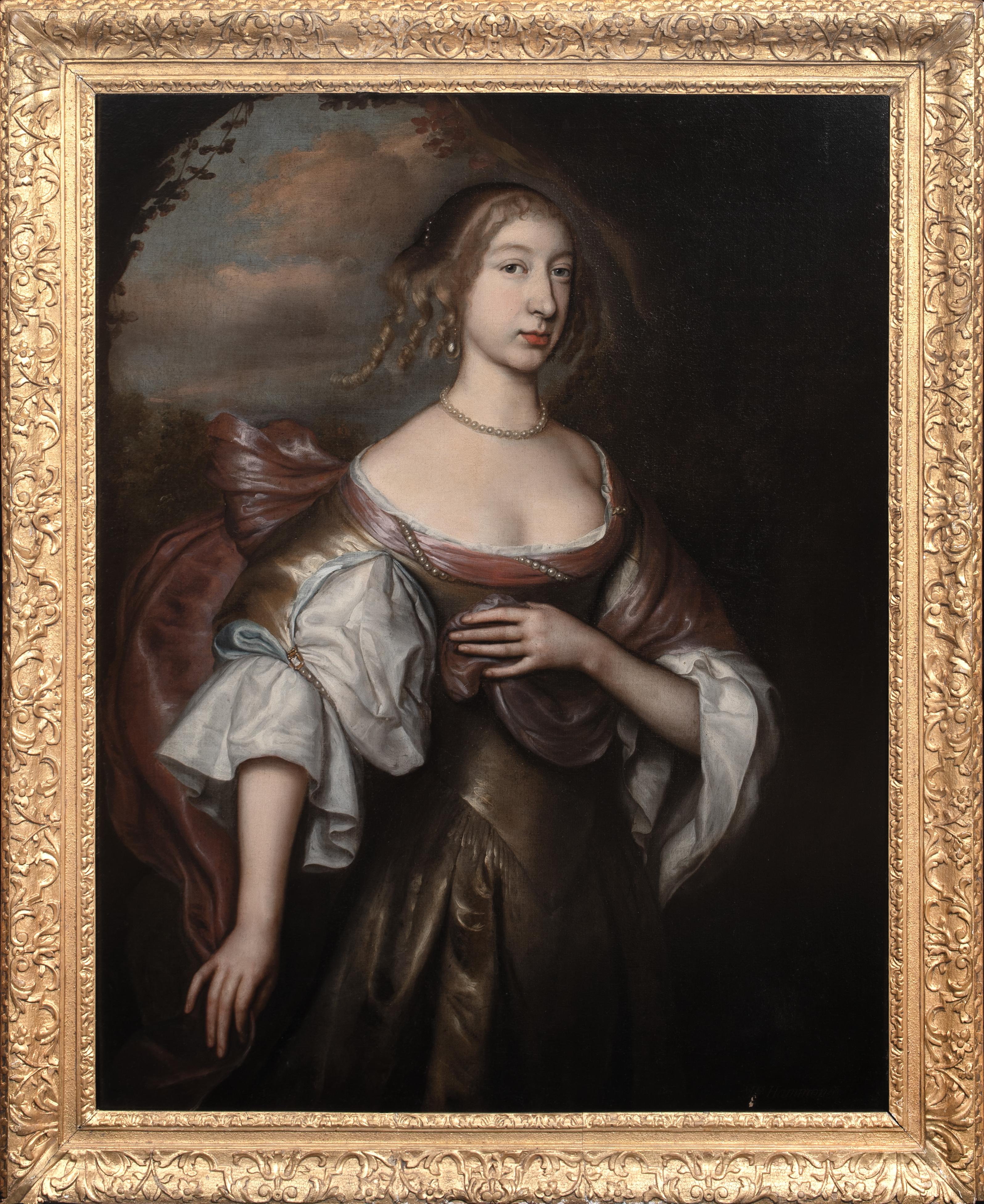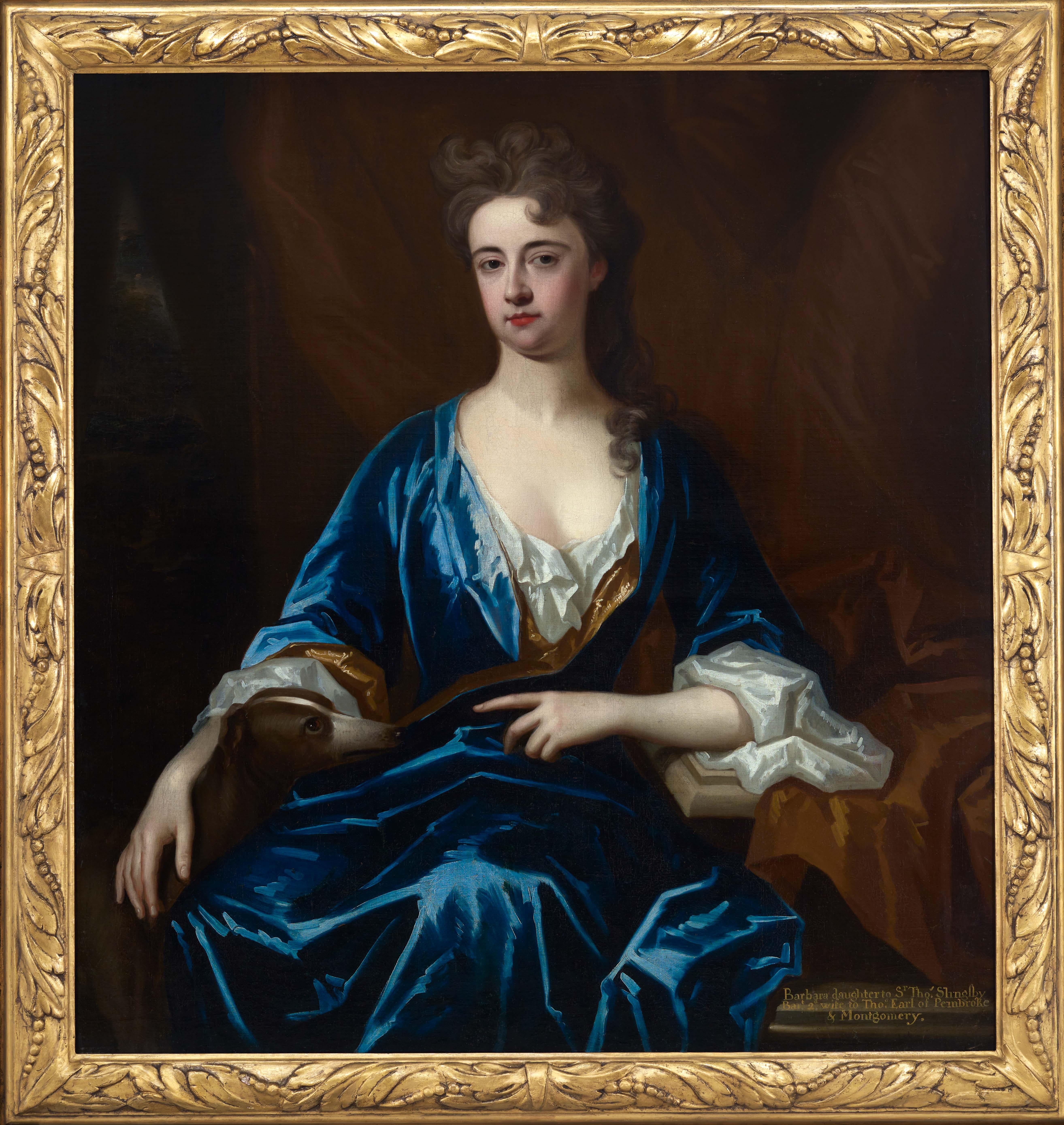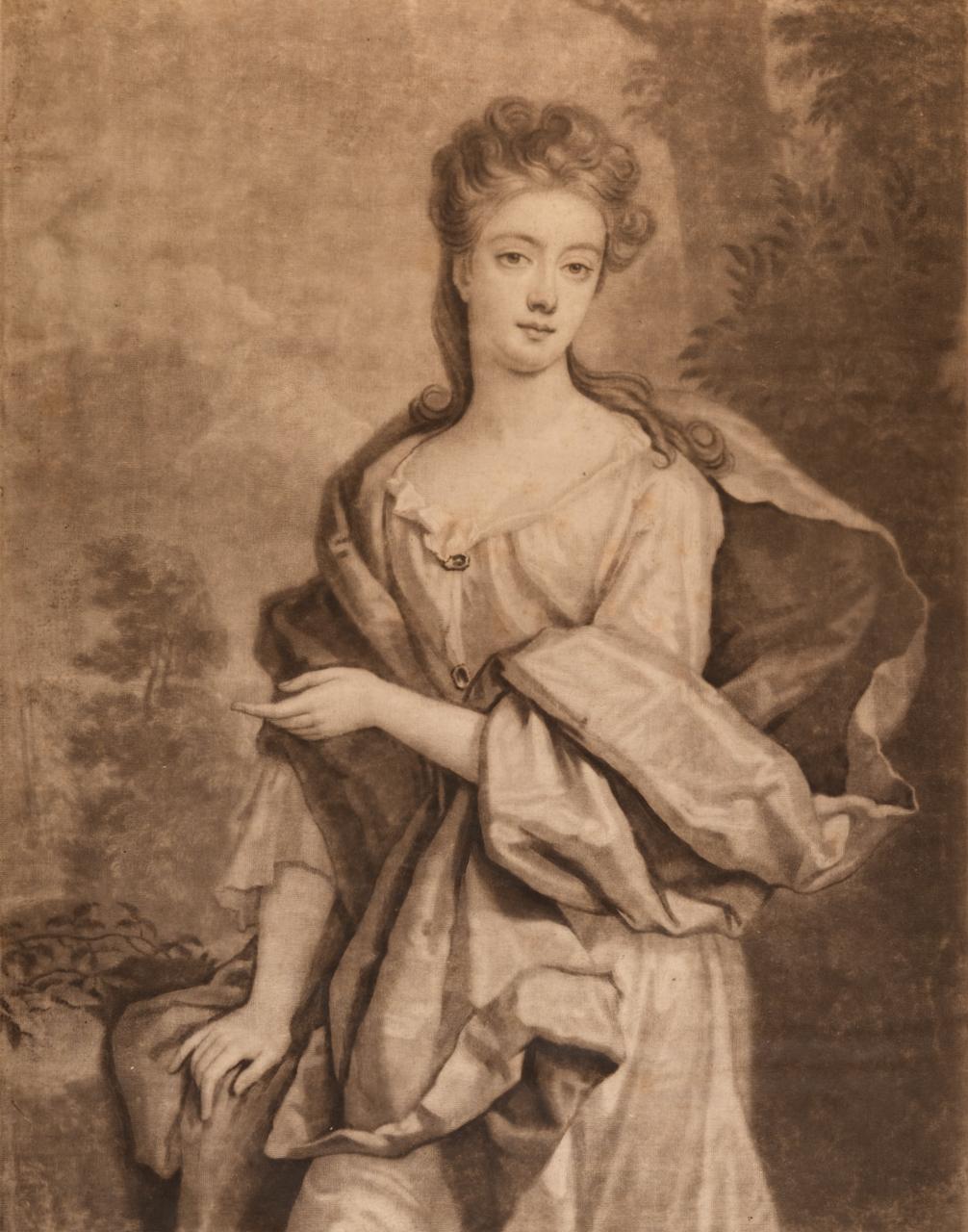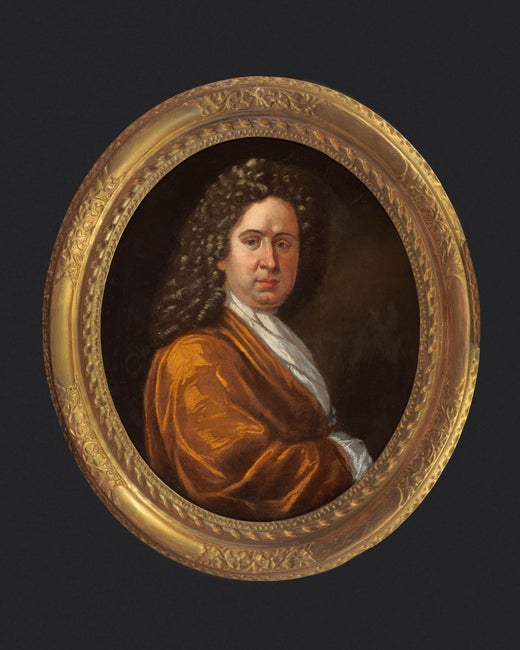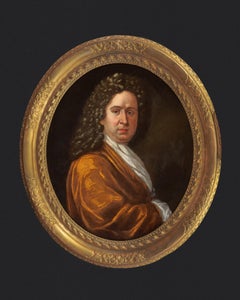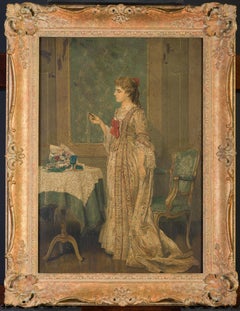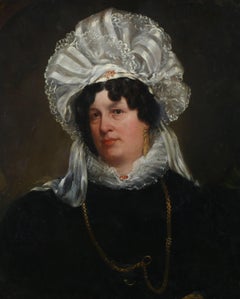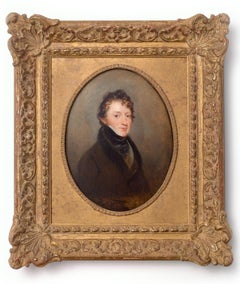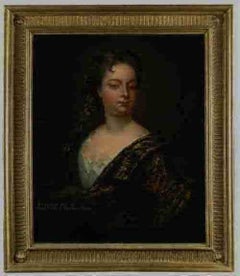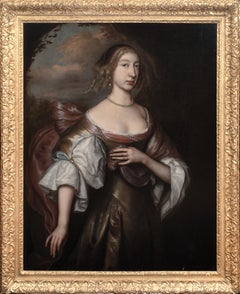Sir Godfrey Kneller3rd Countess of Dysart, Grace Wilbrahamcirca 1696-1698
circa 1696-1698
About the Item
- Creator:Sir Godfrey Kneller (1646 - 1723, British)
- Creation Year:circa 1696-1698
- Dimensions:Height: 29.25 in (74.3 cm)Width: 23.5 in (59.69 cm)Depth: 3 in (7.62 cm)
- Medium:
- Period:
- Condition:
- Gallery Location:Douglas, GB
- Reference Number:Seller: No. 1791stDibs: LU2373215612922
Sir Godfrey Kneller
Sir Godfrey Kneller was a leading English Baroque portraitist whose subjects included nobility, politicians, poets, writers and other notable figures. His figurative and portrait paintings were in great demand for more than three decades around the turn of the 18th century.
Kneller was born in Lübeck, Germany, in 1646. His father was a painter and a city surveyor, positions which gave Kneller the opportunity of a university education. He studied mathematics at Leiden University in the Netherlands before shifting to painting, studying under luminaries such as Ferdinand Bol and Rembrandt.
In 1672, Kneller moved to Italy where he spent time in Rome and Venice painting portraits for the nobility. Around 1676, he moved to England, where he opened a studio. An encounter with the Duke of Monmouth led to an introduction to King Charles II, and Kneller became a court painter, garnering a reputation for his grand style. The young painter’s portraits had a penetrating quality that evoked the subject’s presence through like-like qualities on canvas.
In 1684, Kneller traveled to France to paint Louis XIV. Following the death of Charles II, he became the court painter for James II and later worked for his successors, William and Mary. Kneller was knighted in 1692 and received an honorary doctorate of law from the University of Oxford in 1695.
Between 1700 and 1720, he painted 42 portraits of members of the Kit-Cat Club, a political and literary group. Mary II also commissioned him to paint the Hampton Court Beauties, a series of paintings featuring the most graceful ladies of the royal court.
In 1711, Kneller became the governor of the London Academy and subsequently won re-election every year until 1718. King George I made him a baronet in 1715.
Kneller died in London in 1723, with hundreds of unfinished paintings remaining in the prolific portrait master's studio.
On 1stDibs, find a collection of Sir Godfrey Kneller’s paintings.
- ShippingRetrieving quote...Shipping from: Douglas, United Kingdom
- Return Policy
More From This Seller
View AllLate 17th Century Baroque Portrait Paintings
Canvas, Oil
Late 19th Century Portrait Paintings
Oil, Panel
1830s Portrait Paintings
Canvas, Oil
1830s Portrait Paintings
Oil, Panel
Late 19th Century Figurative Sculptures
Bronze
Mid-18th Century Portrait Paintings
Canvas, Oil
You May Also Like
18th Century Old Masters Portrait Paintings
Oil
18th Century Old Masters Portrait Paintings
Oil
1660s Portrait Paintings
Oil
17th Century Portrait Paintings
Canvas, Oil
17th Century Old Masters Portrait Paintings
Cotton Canvas, Oil
Late 17th Century Portrait Prints
Mezzotint
